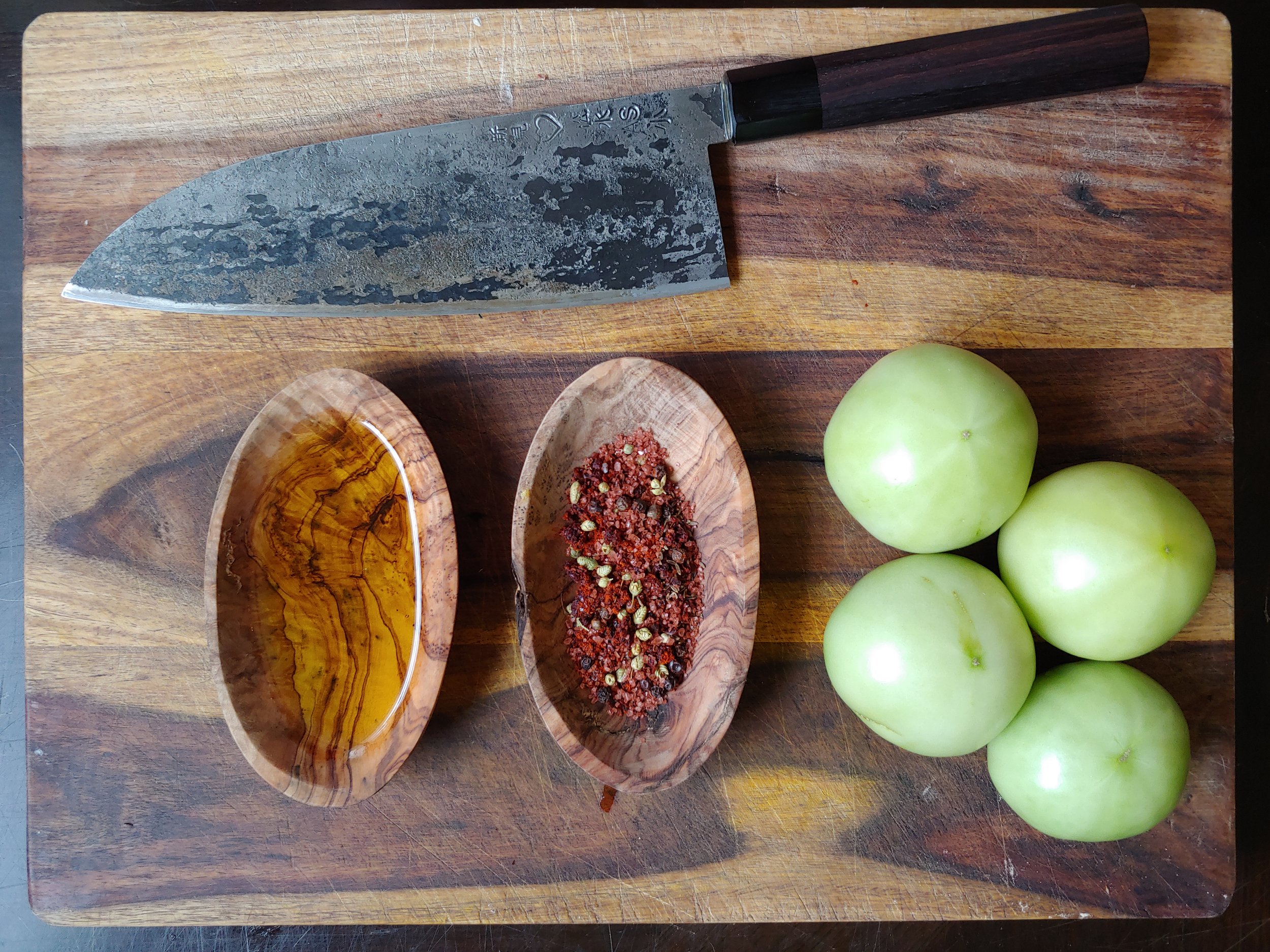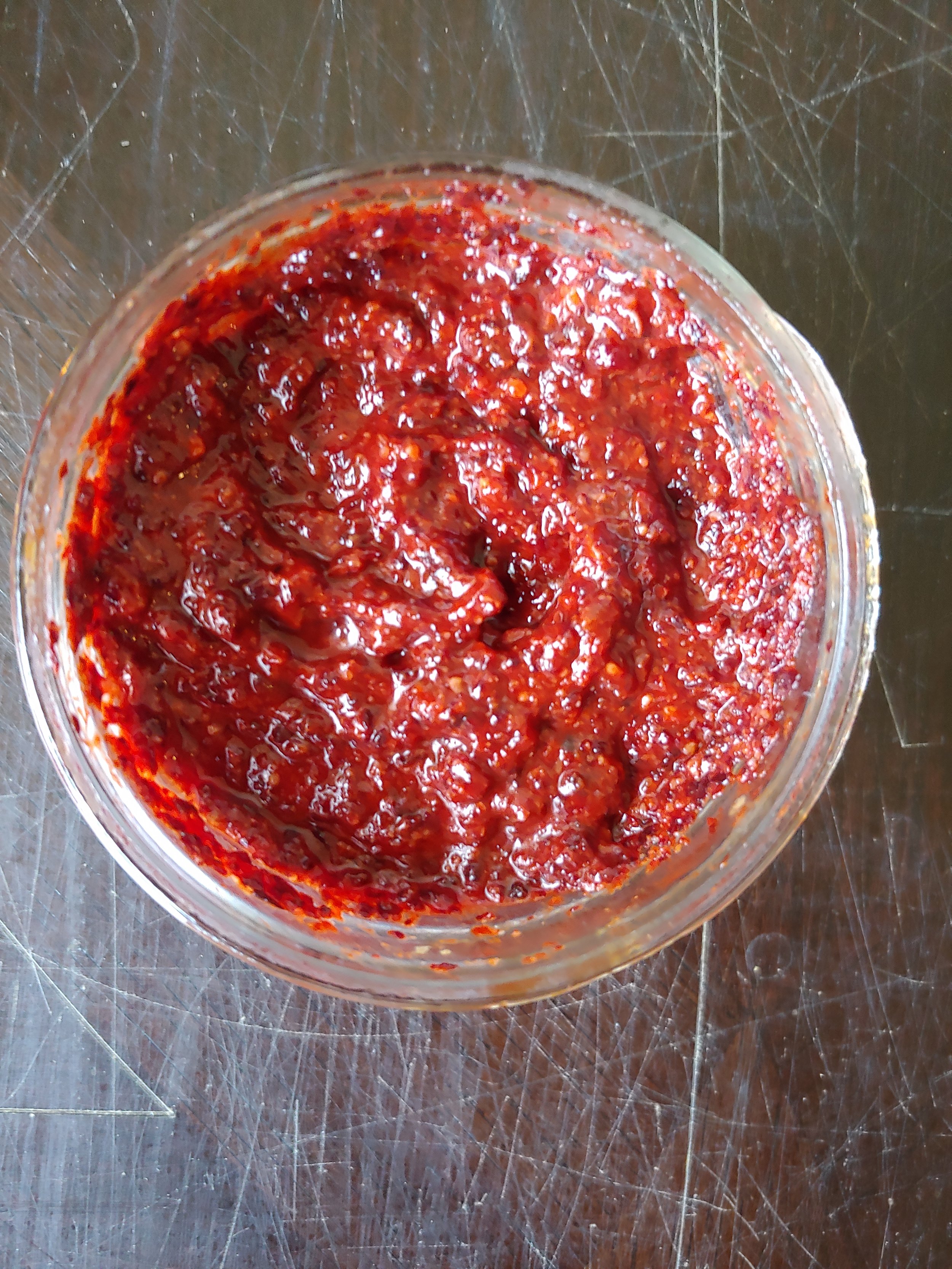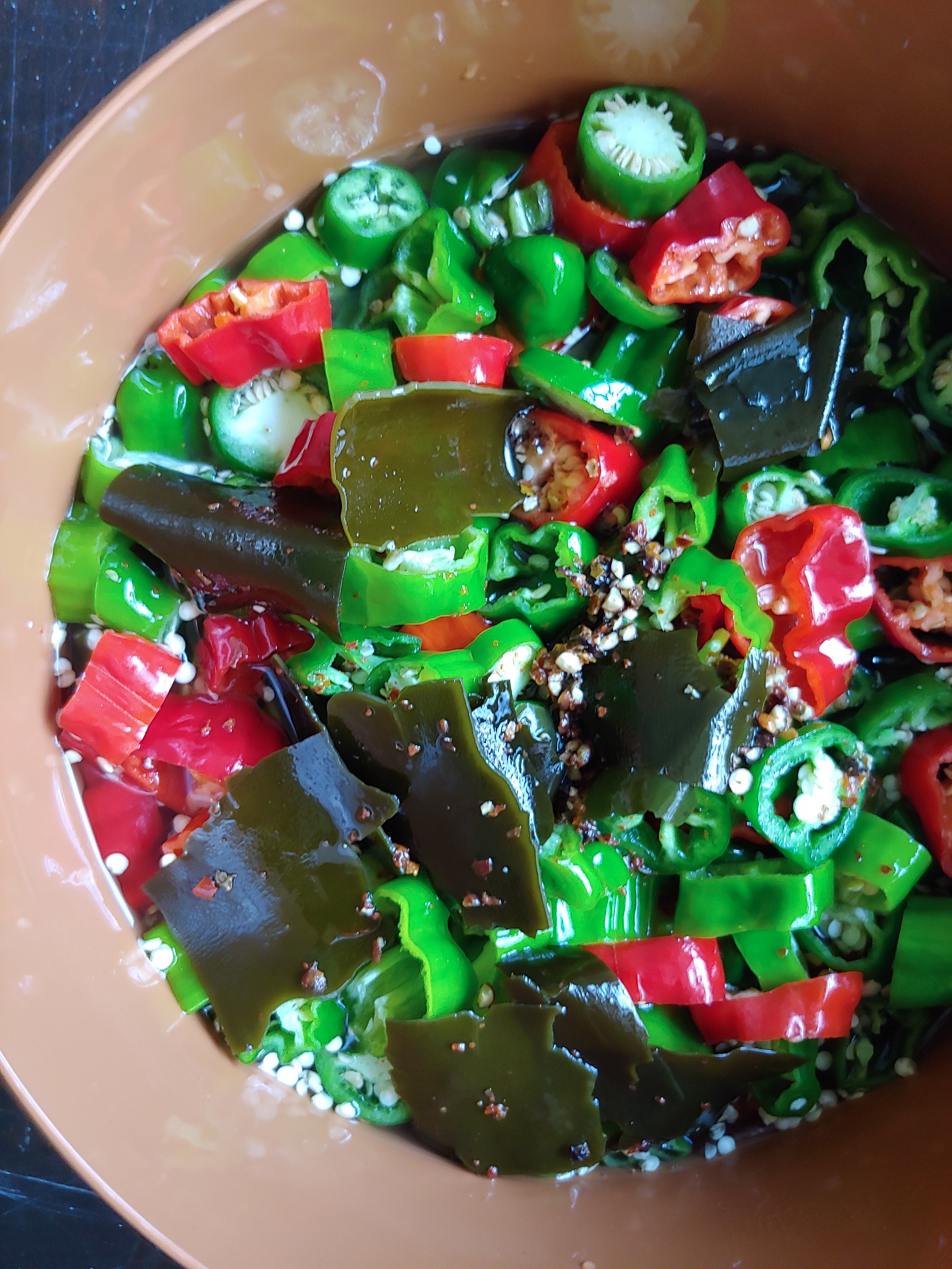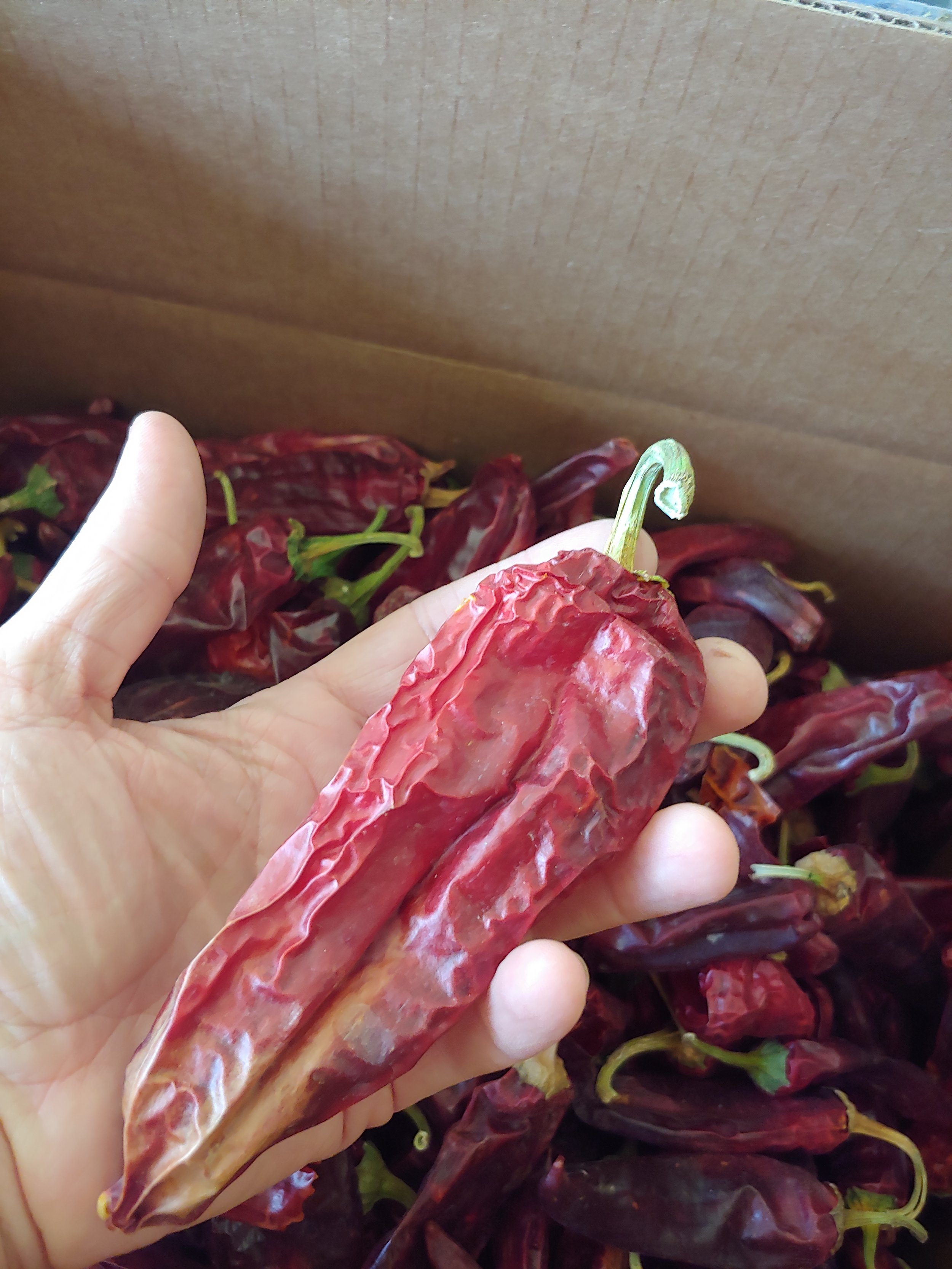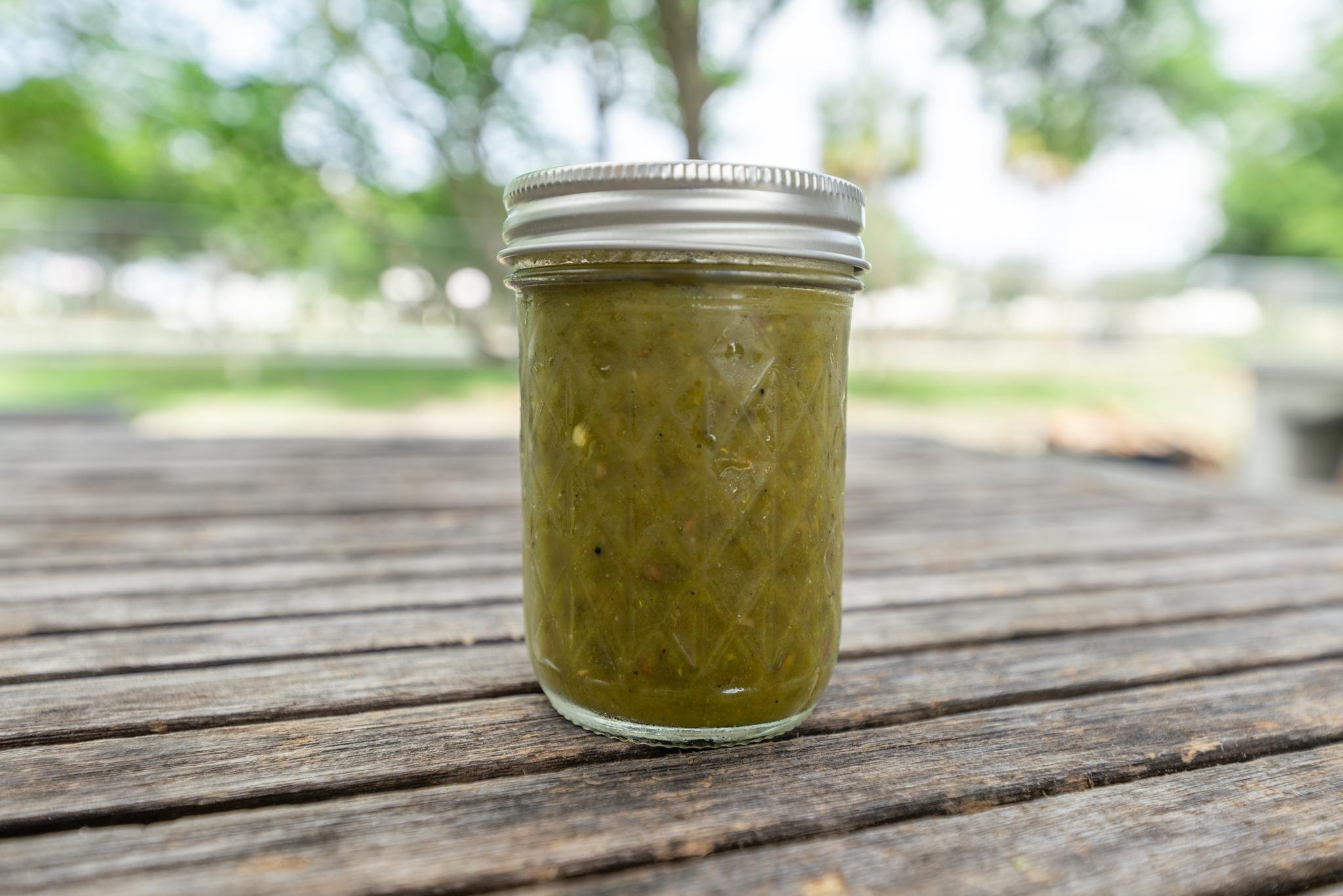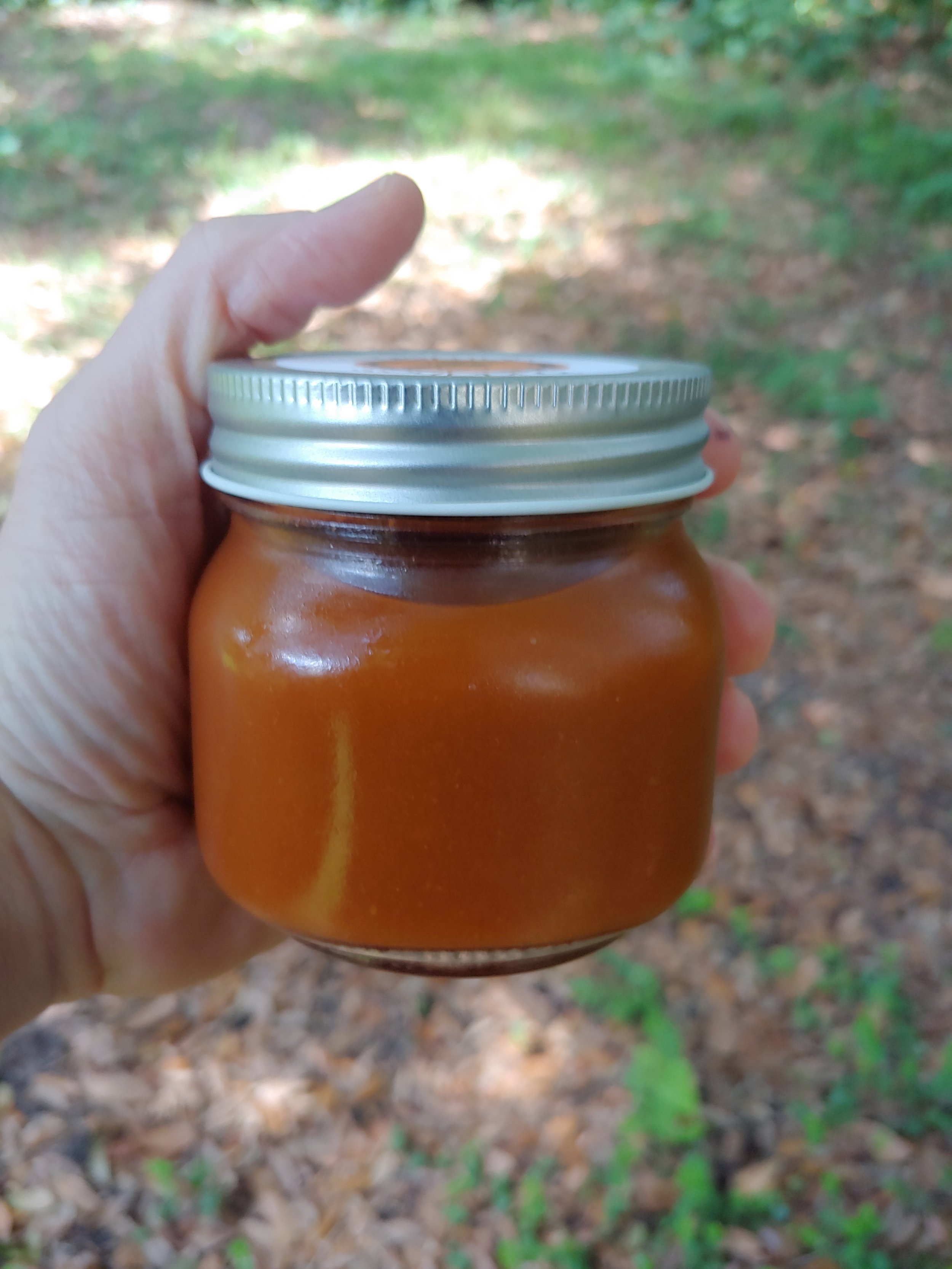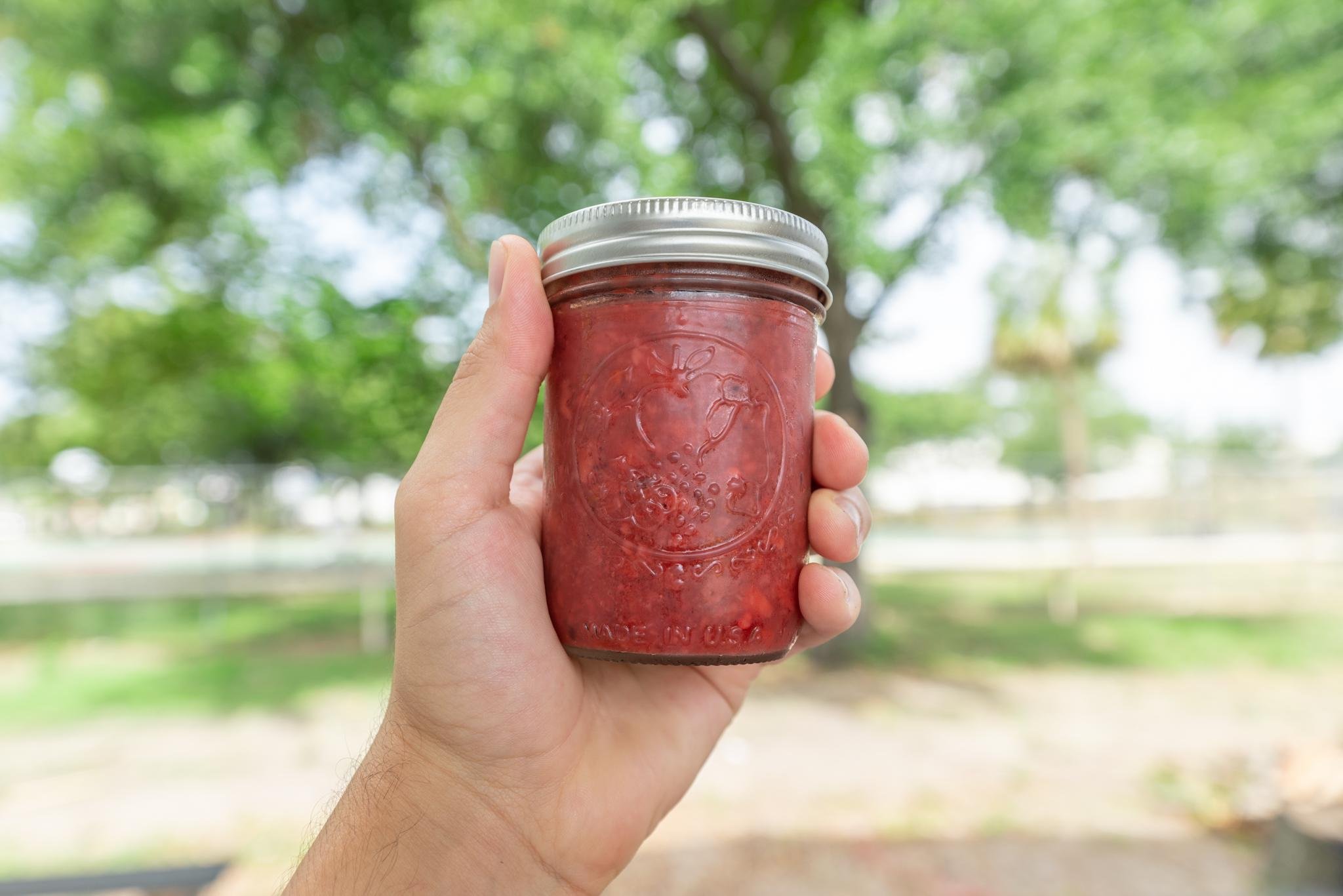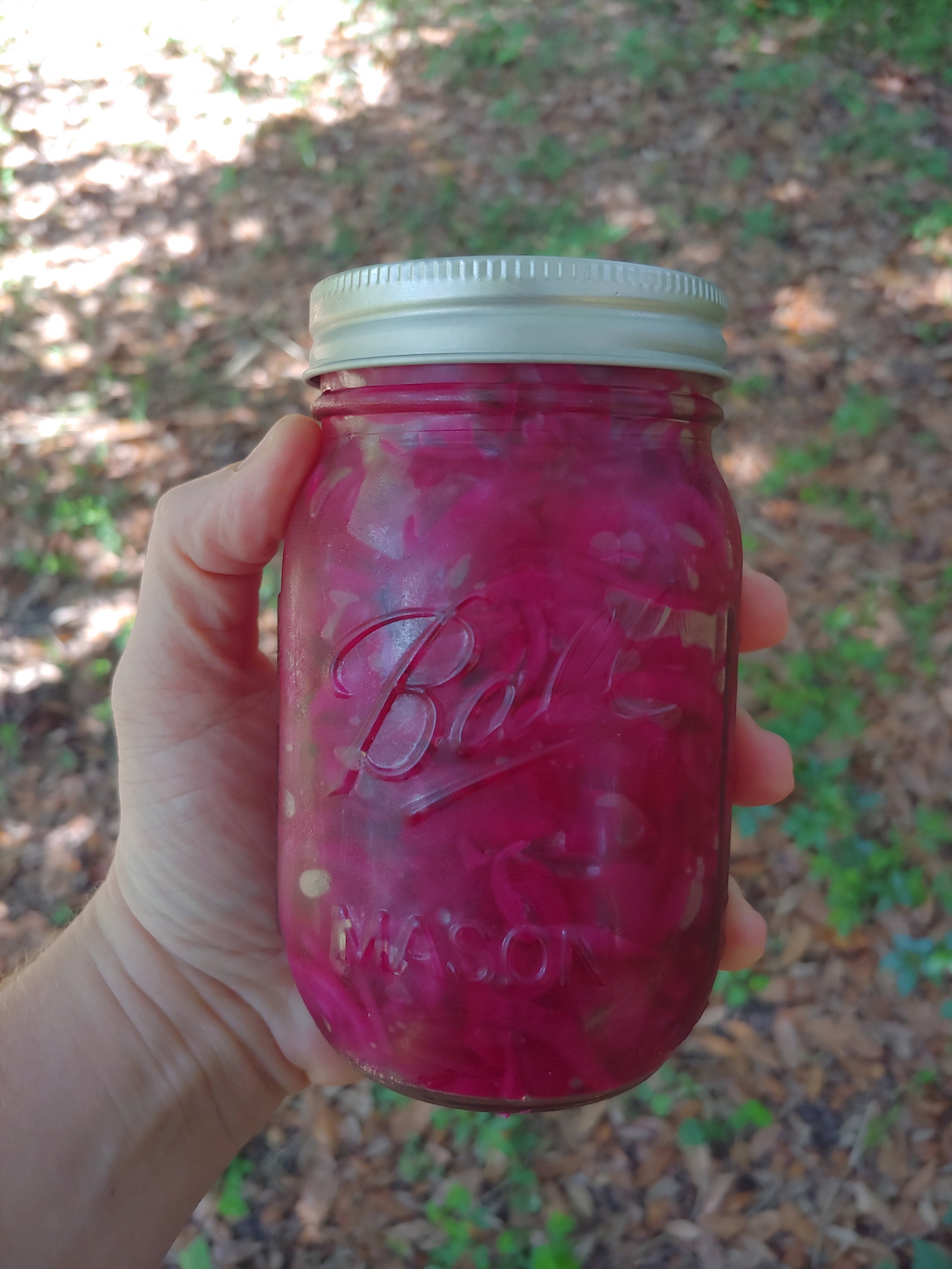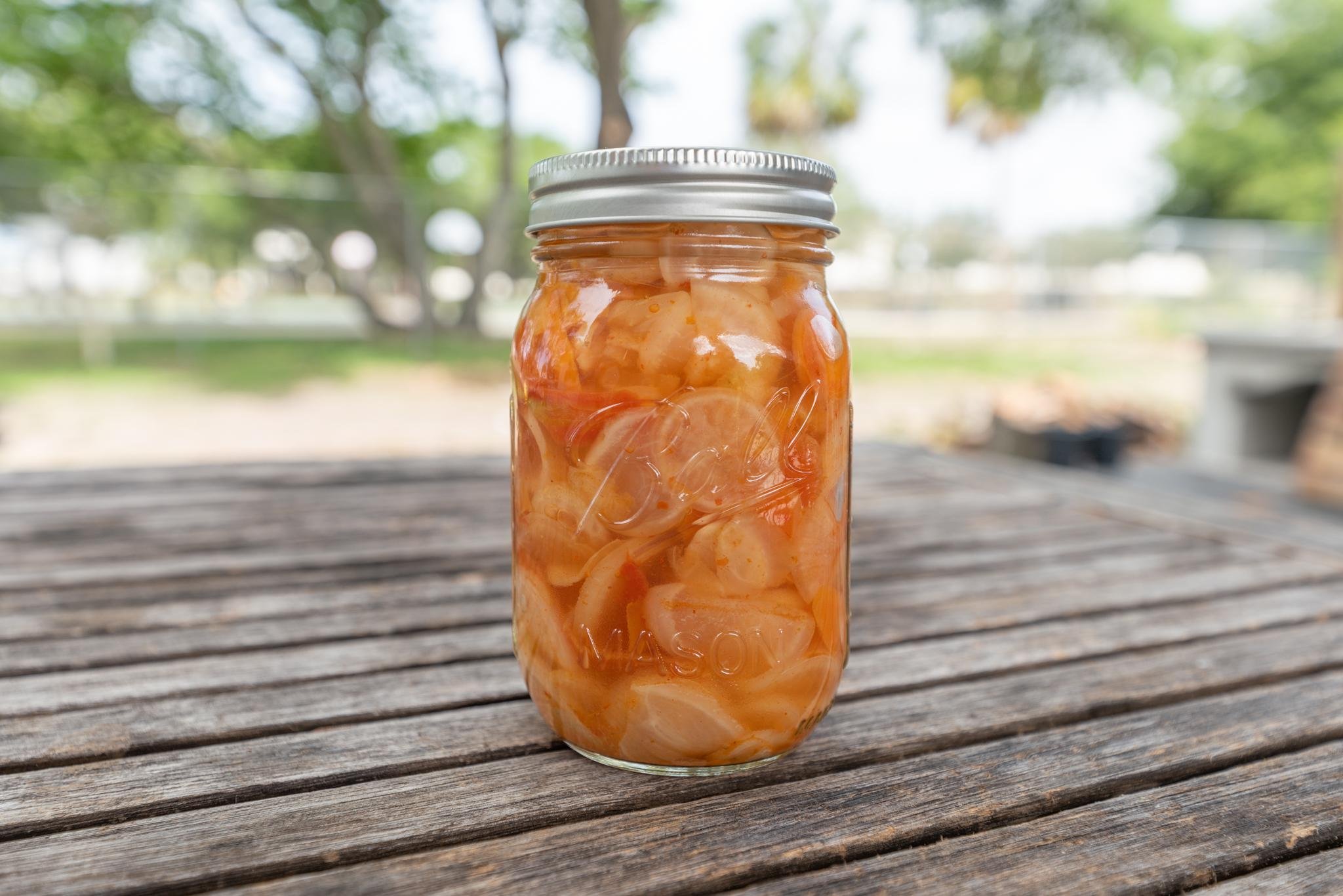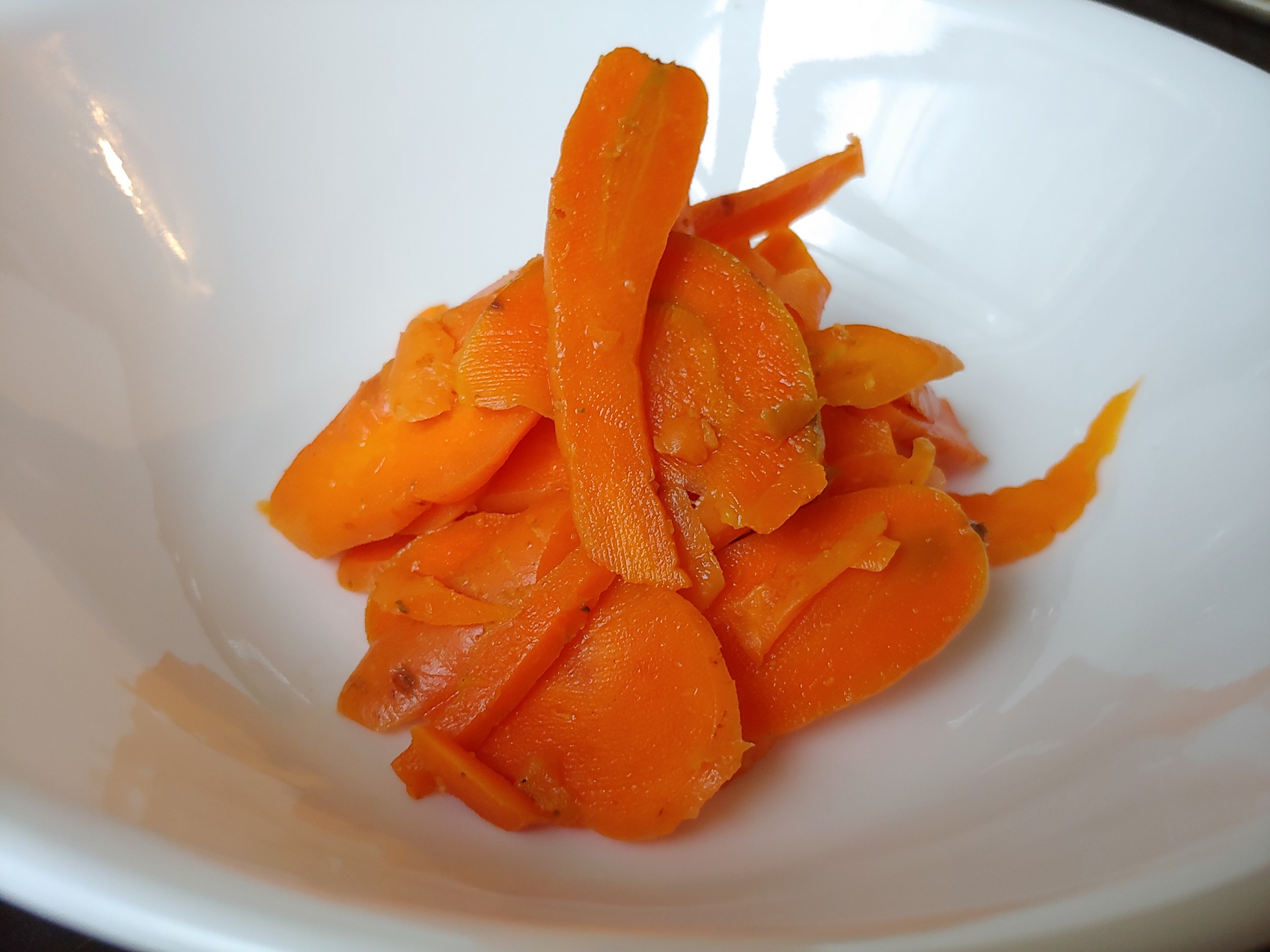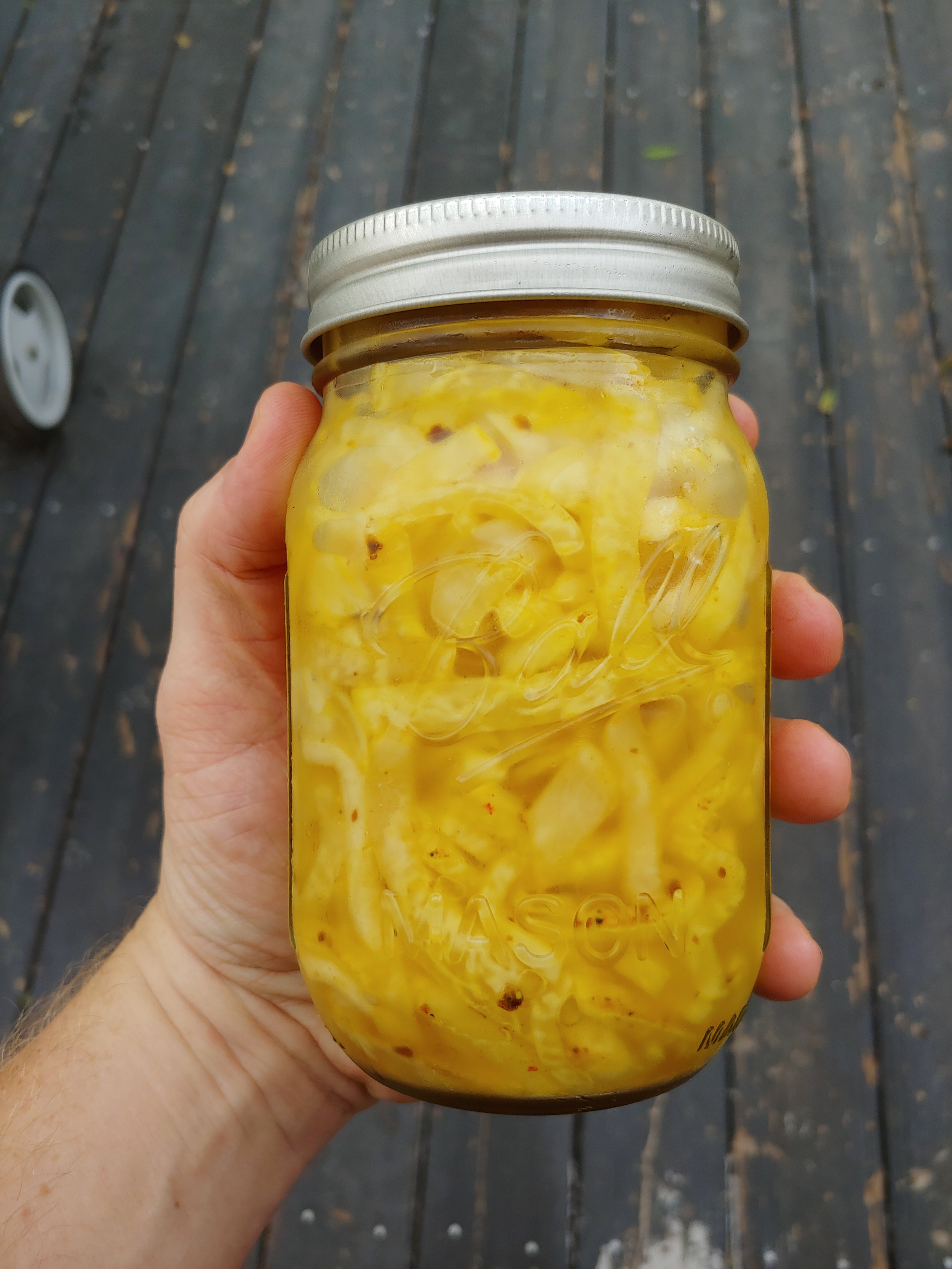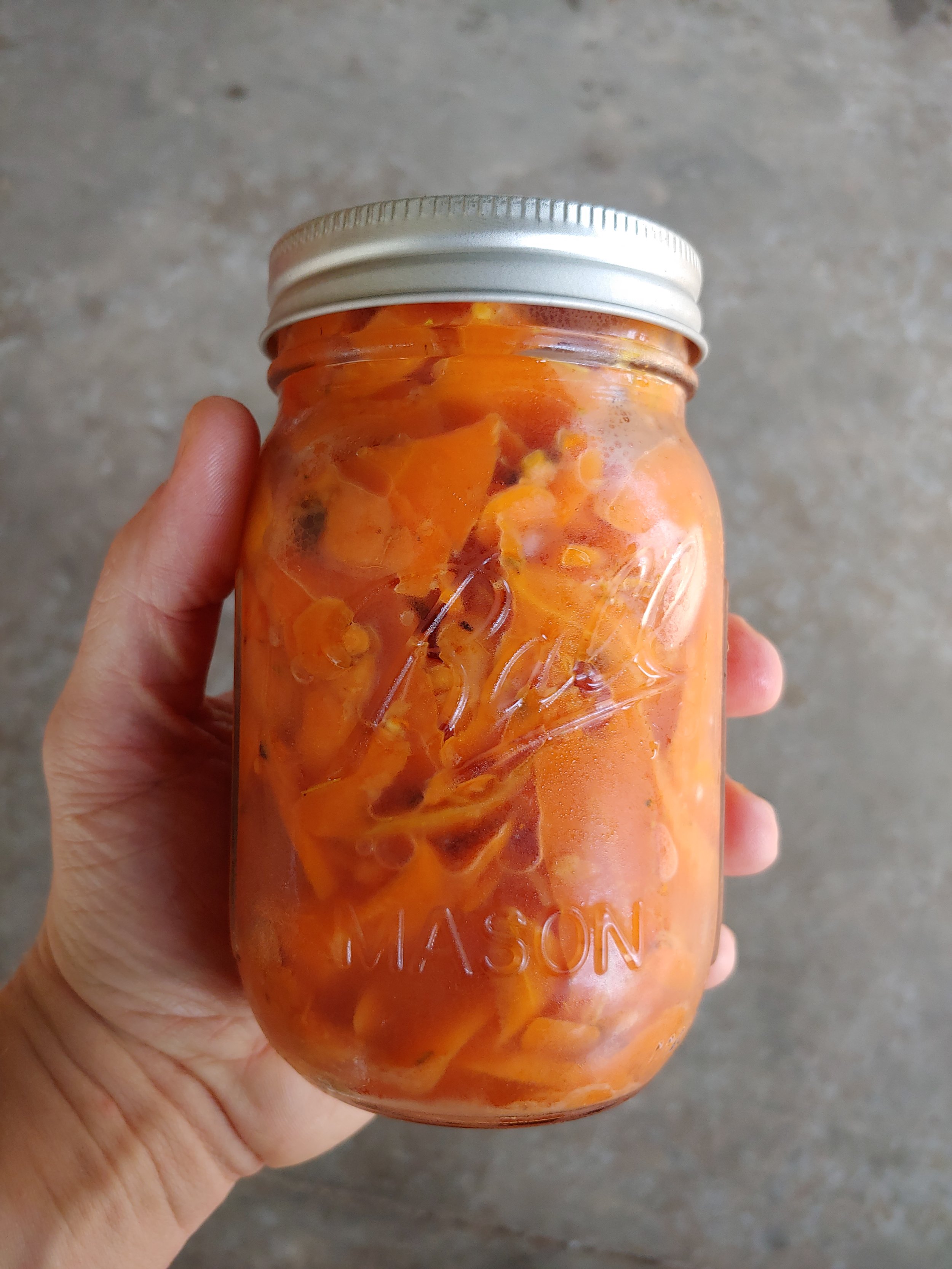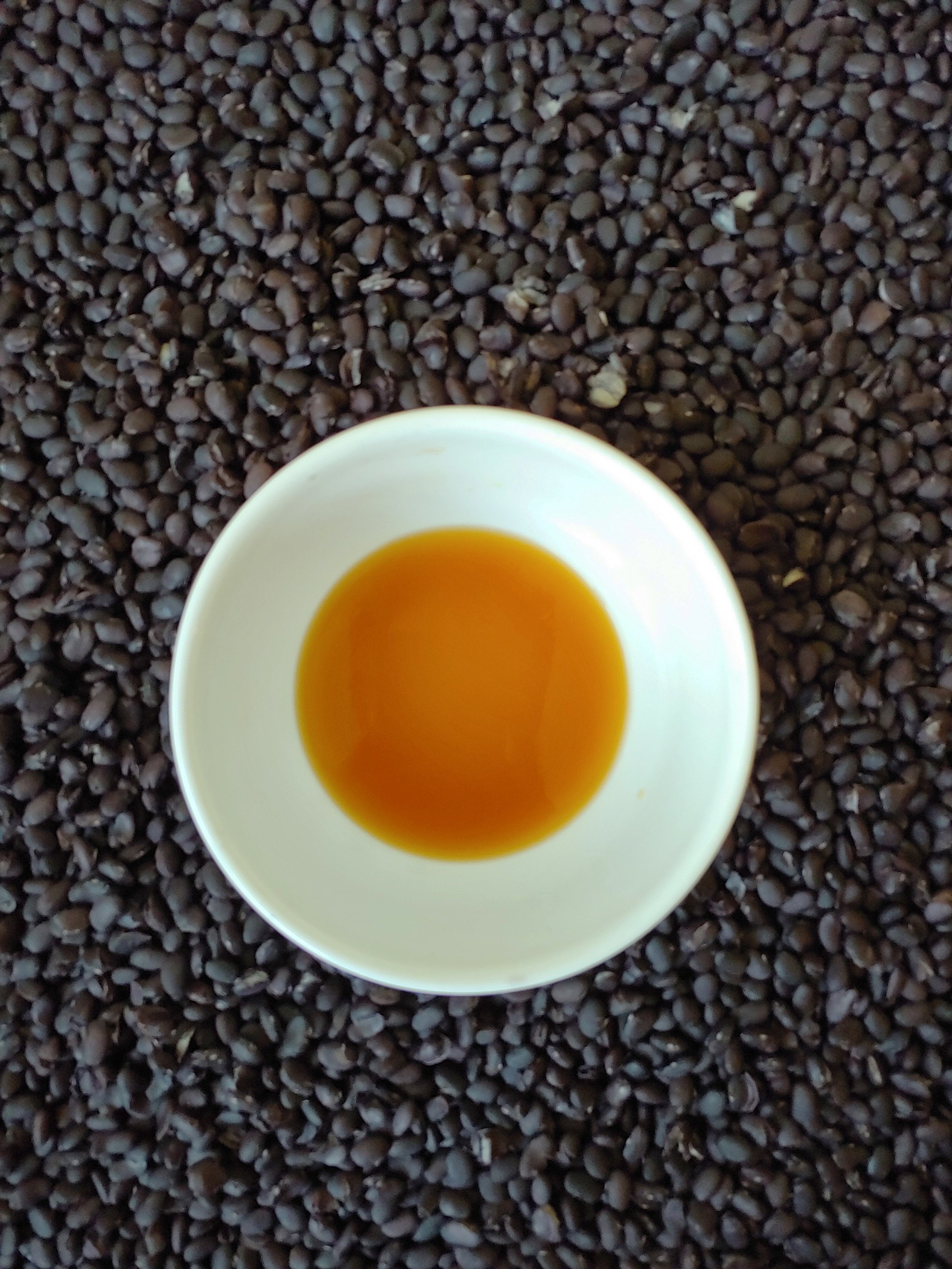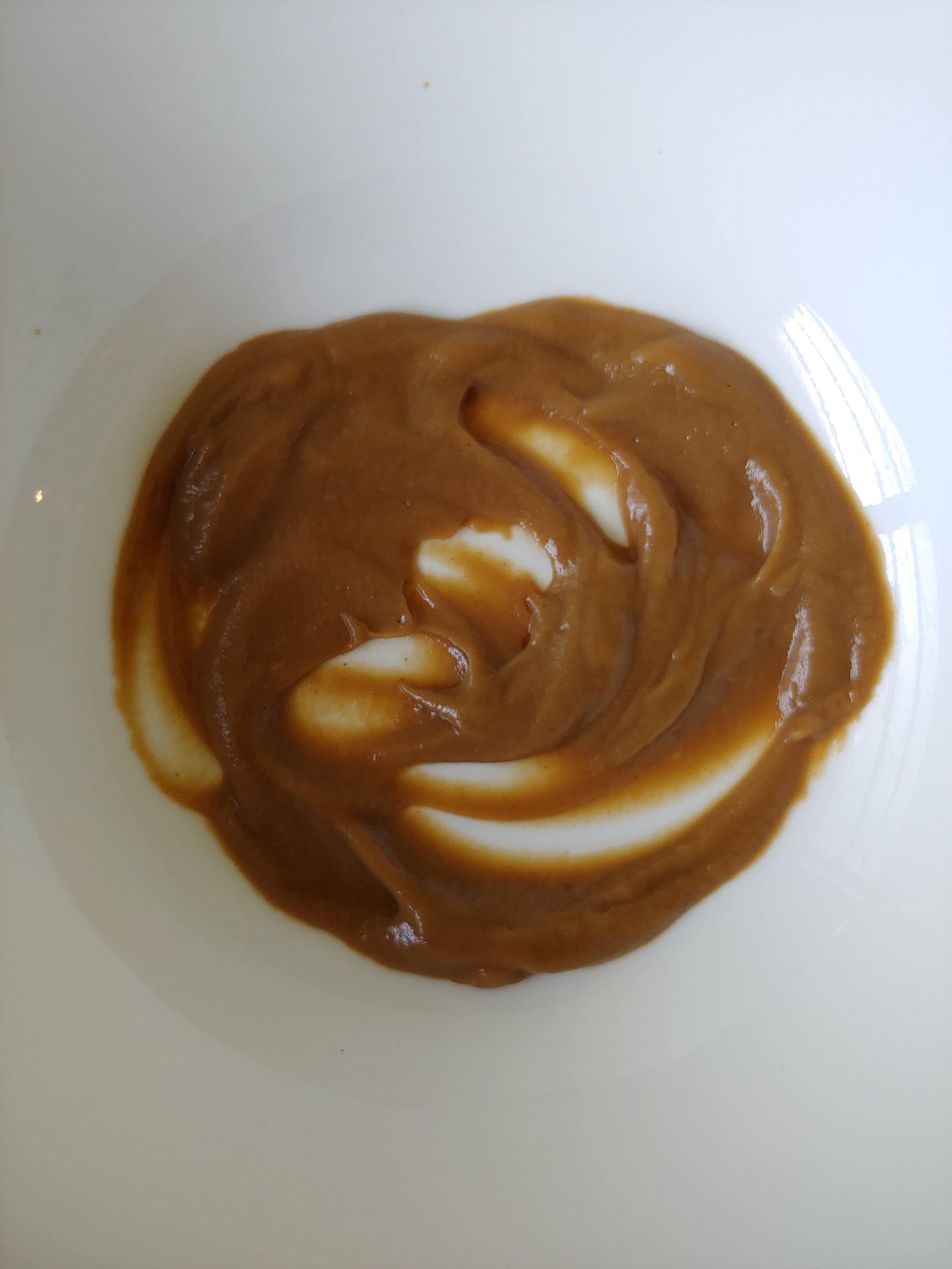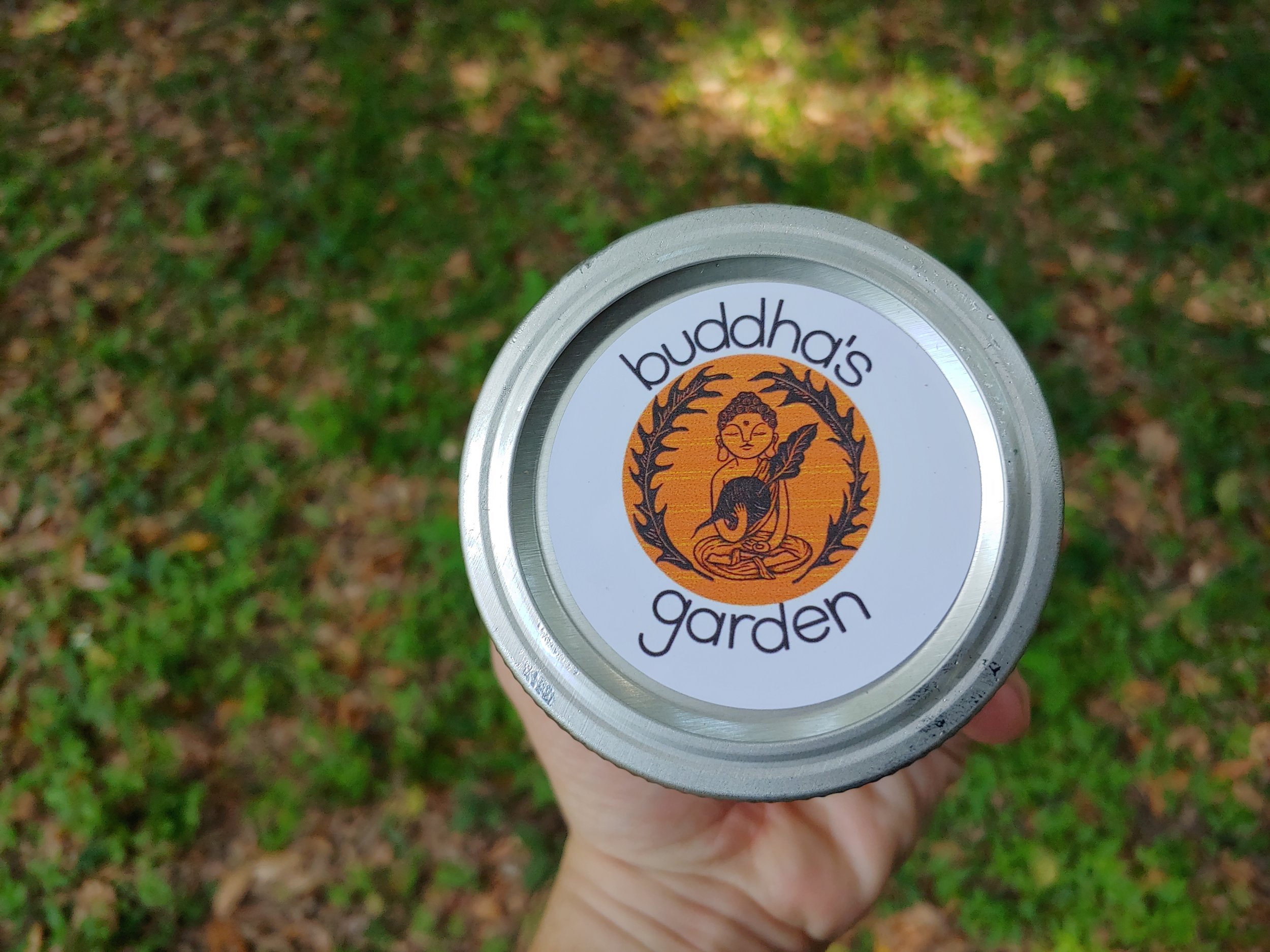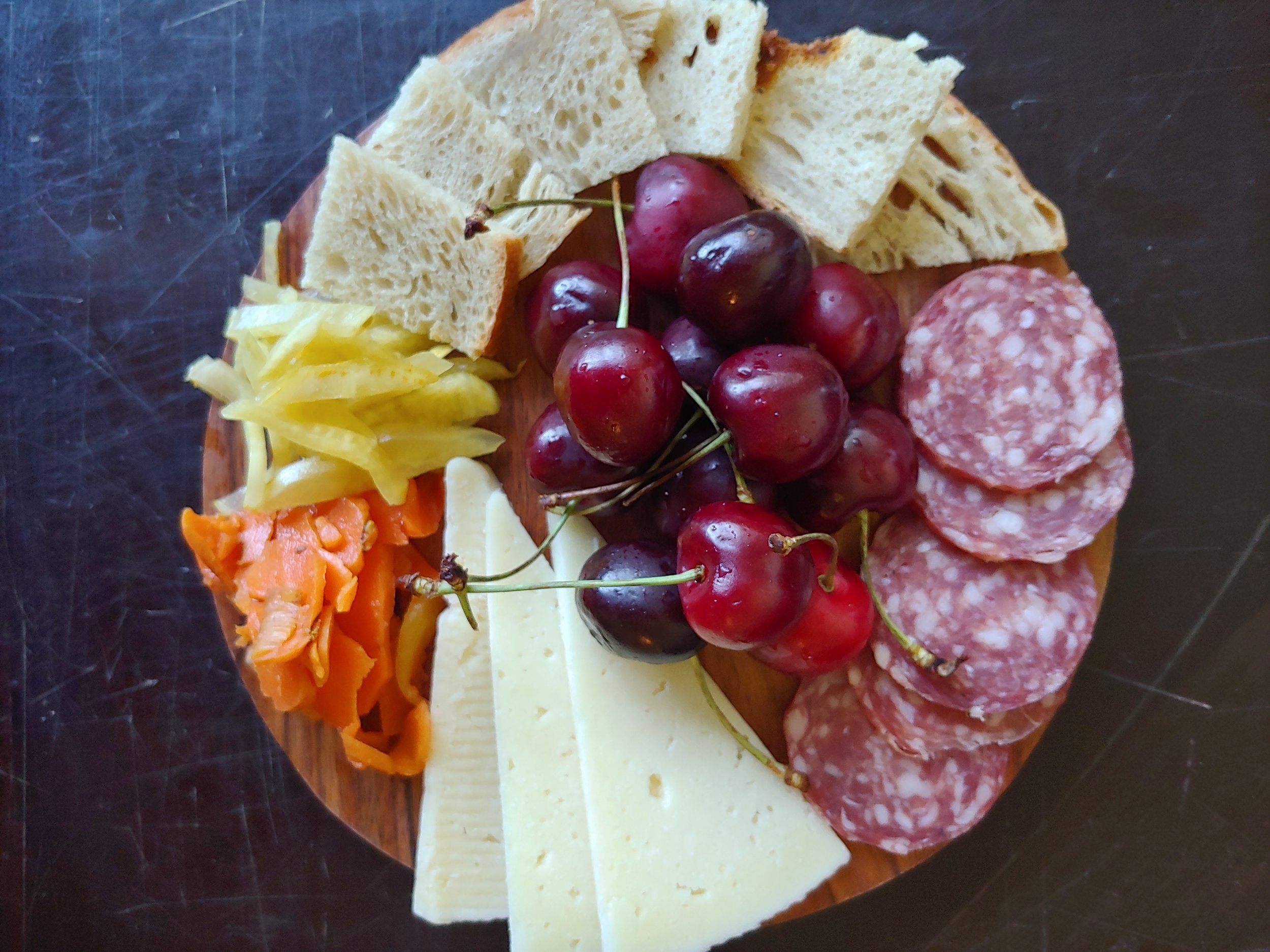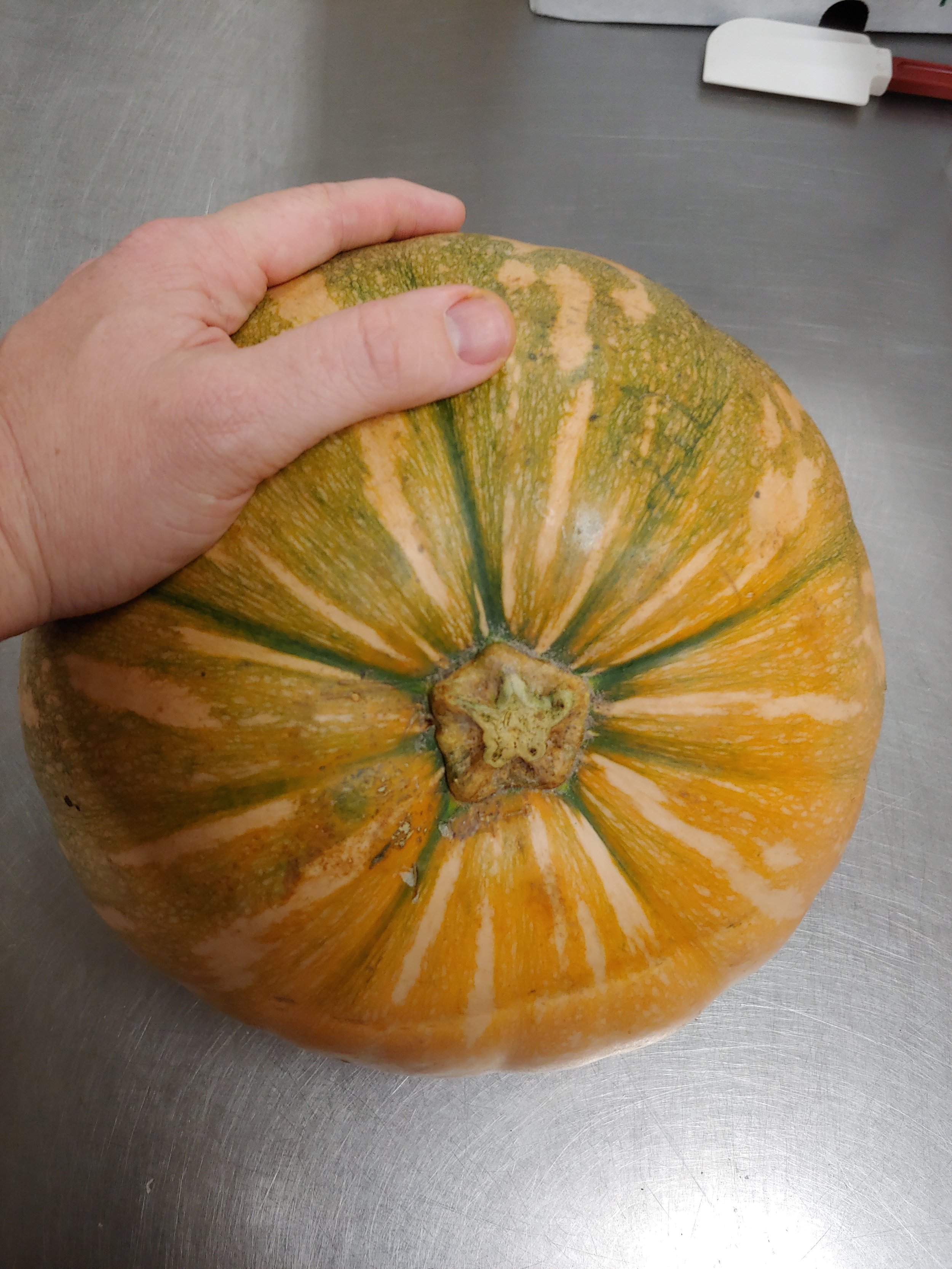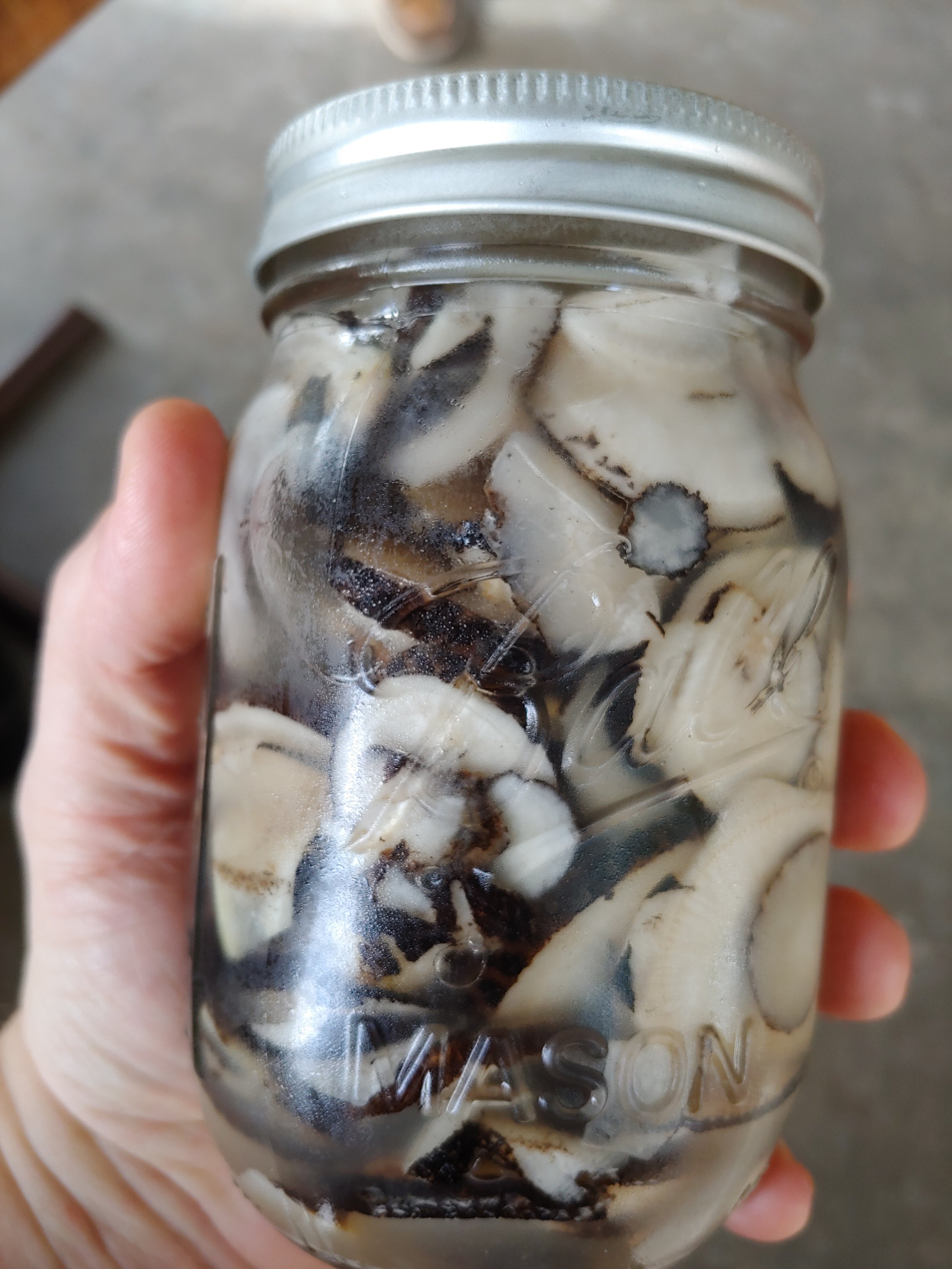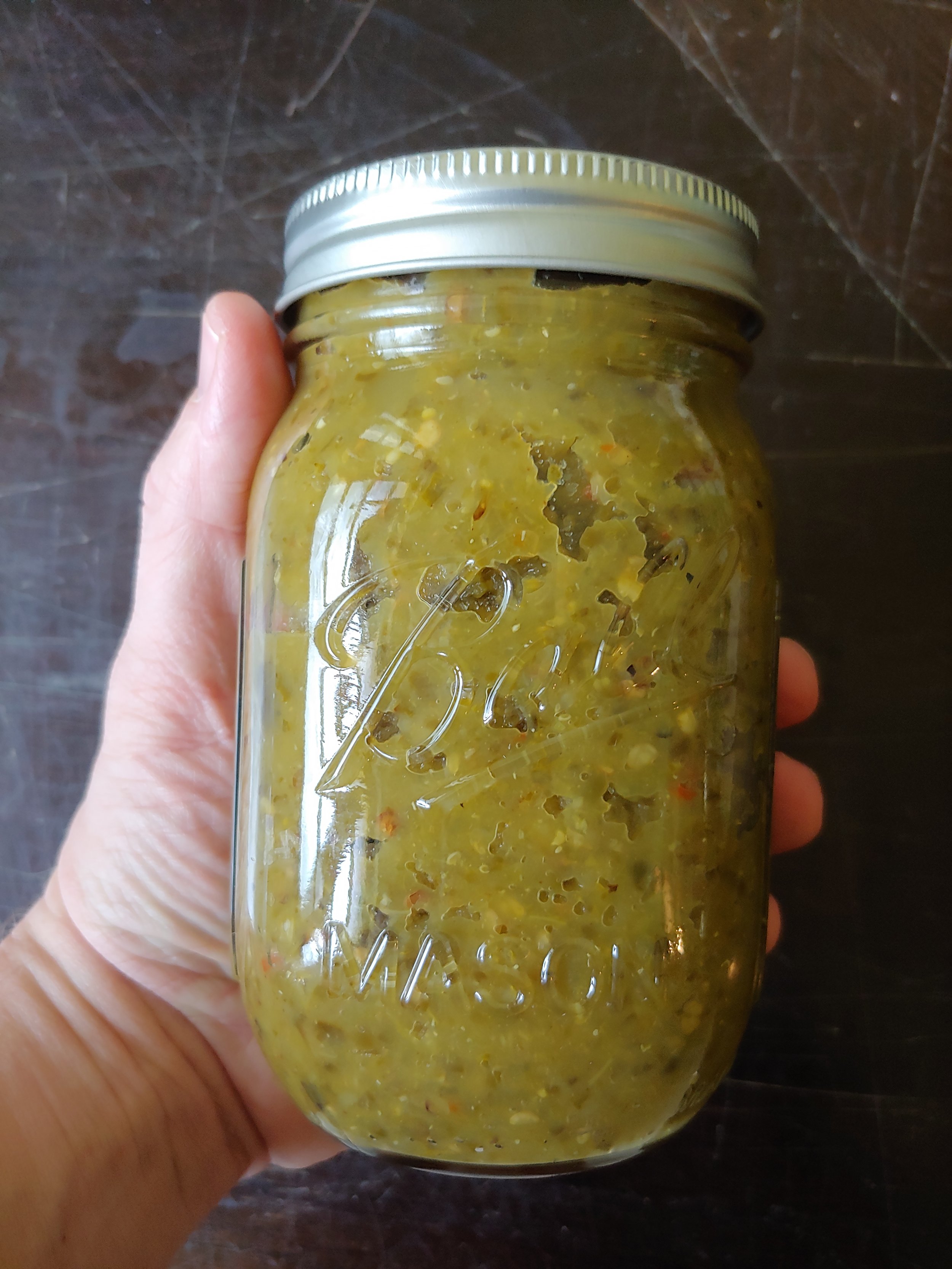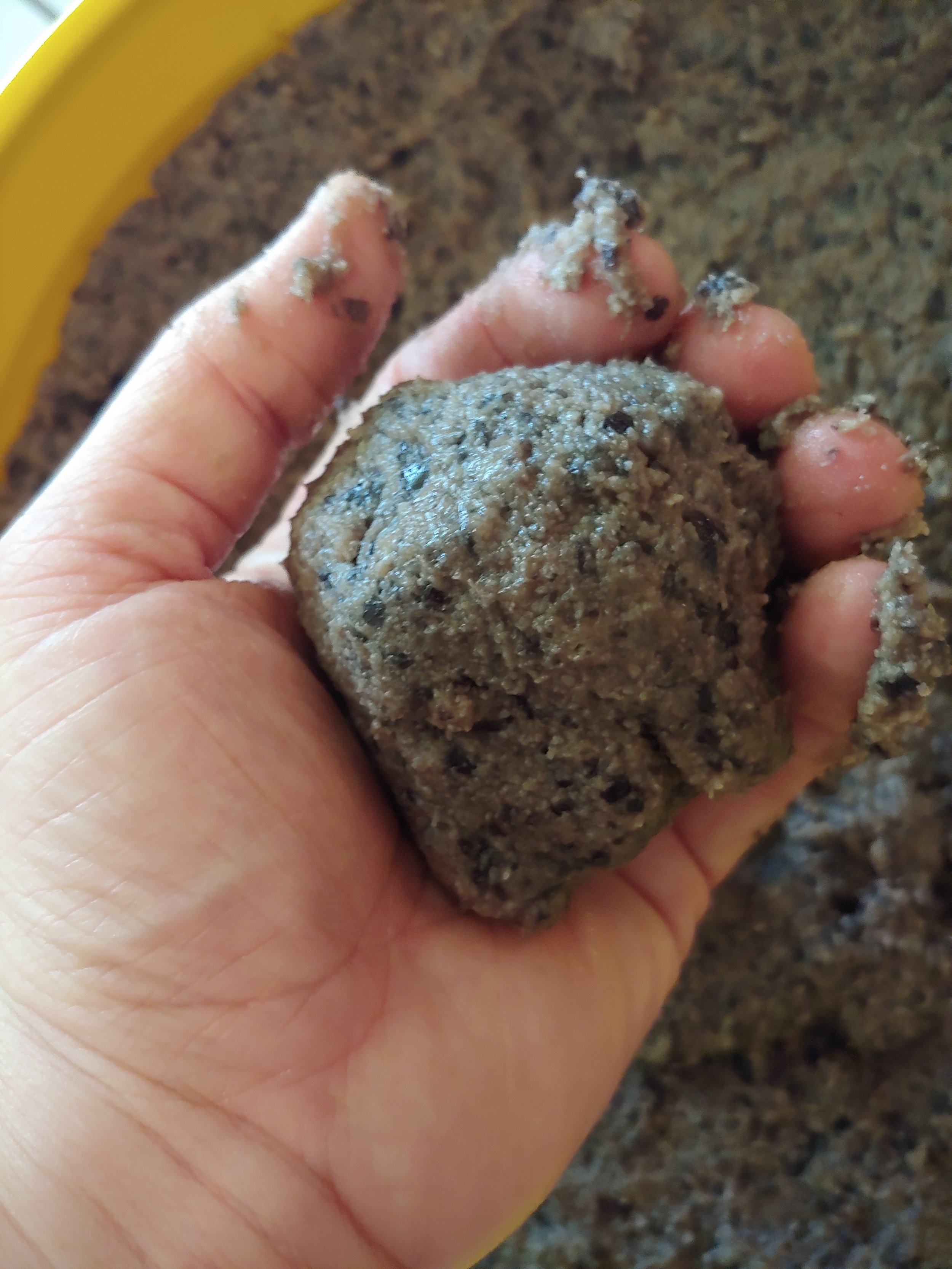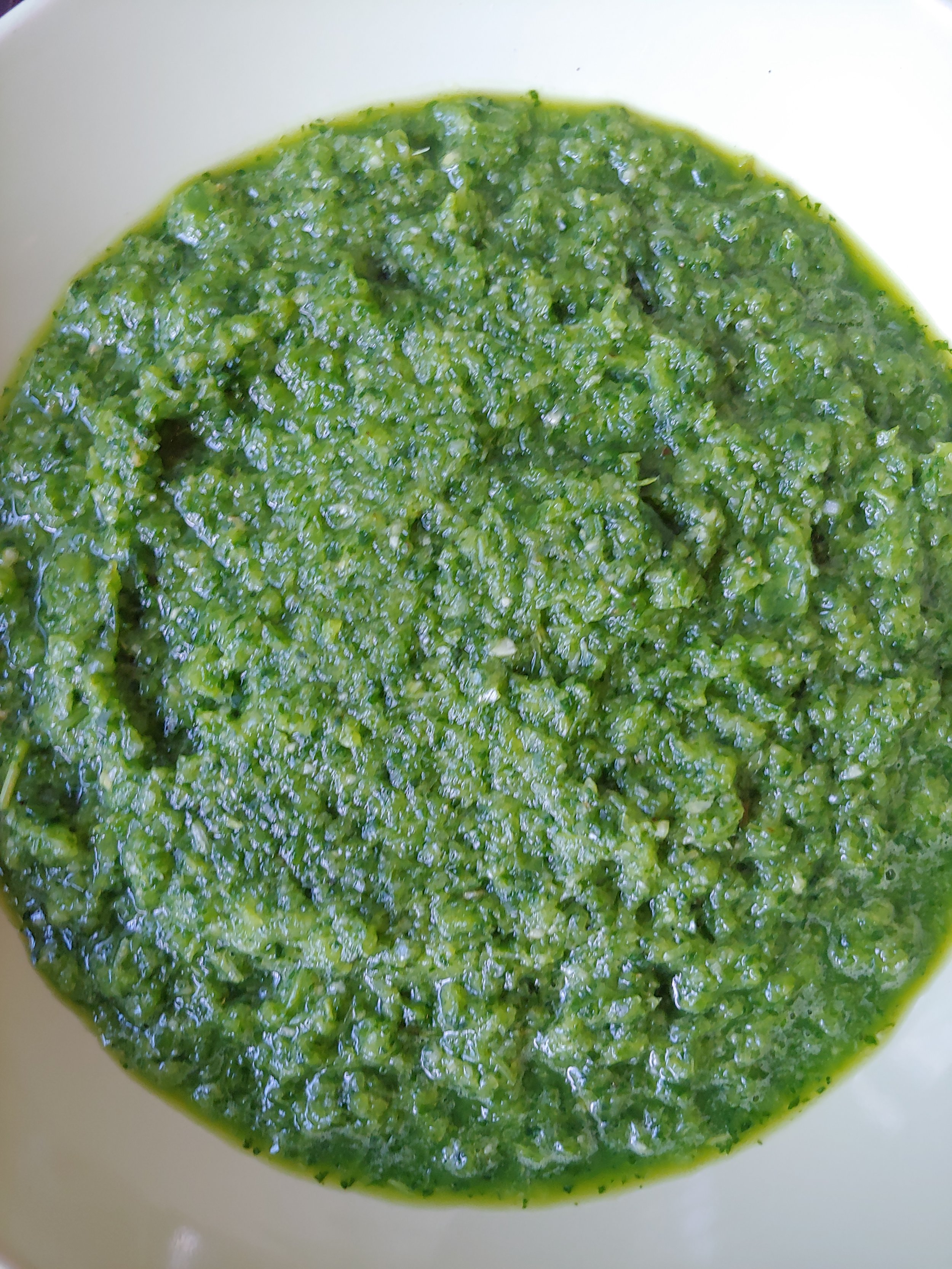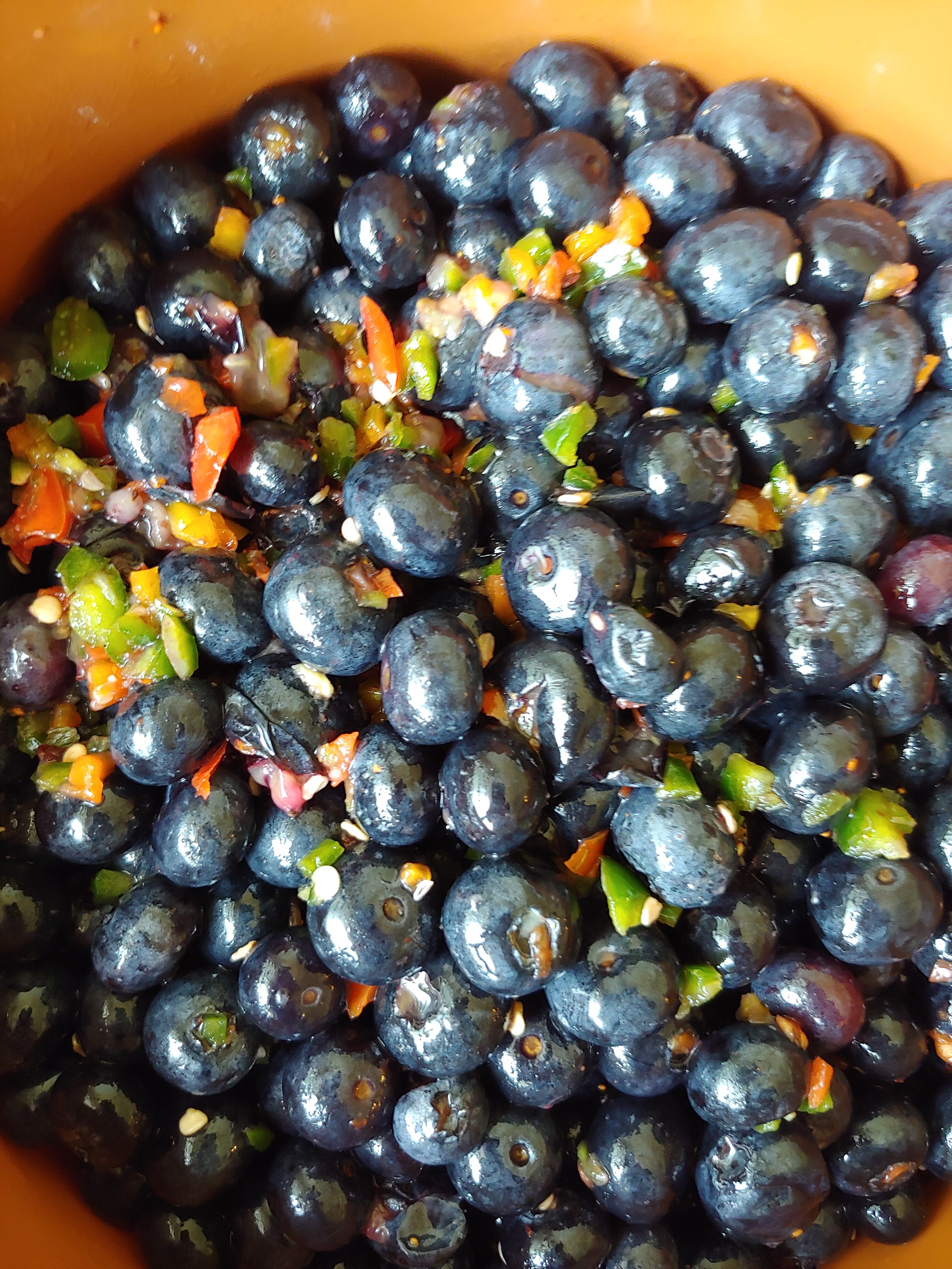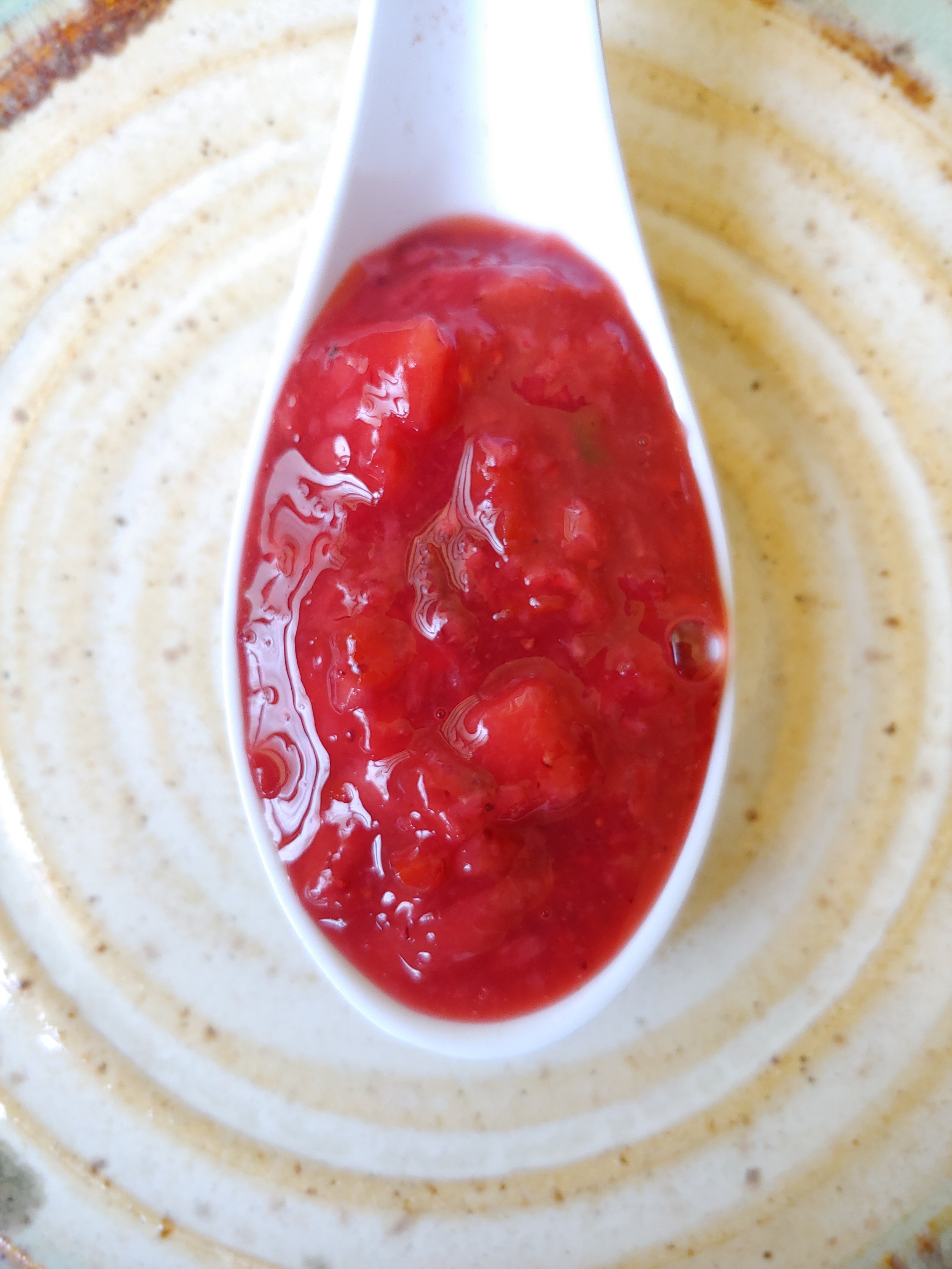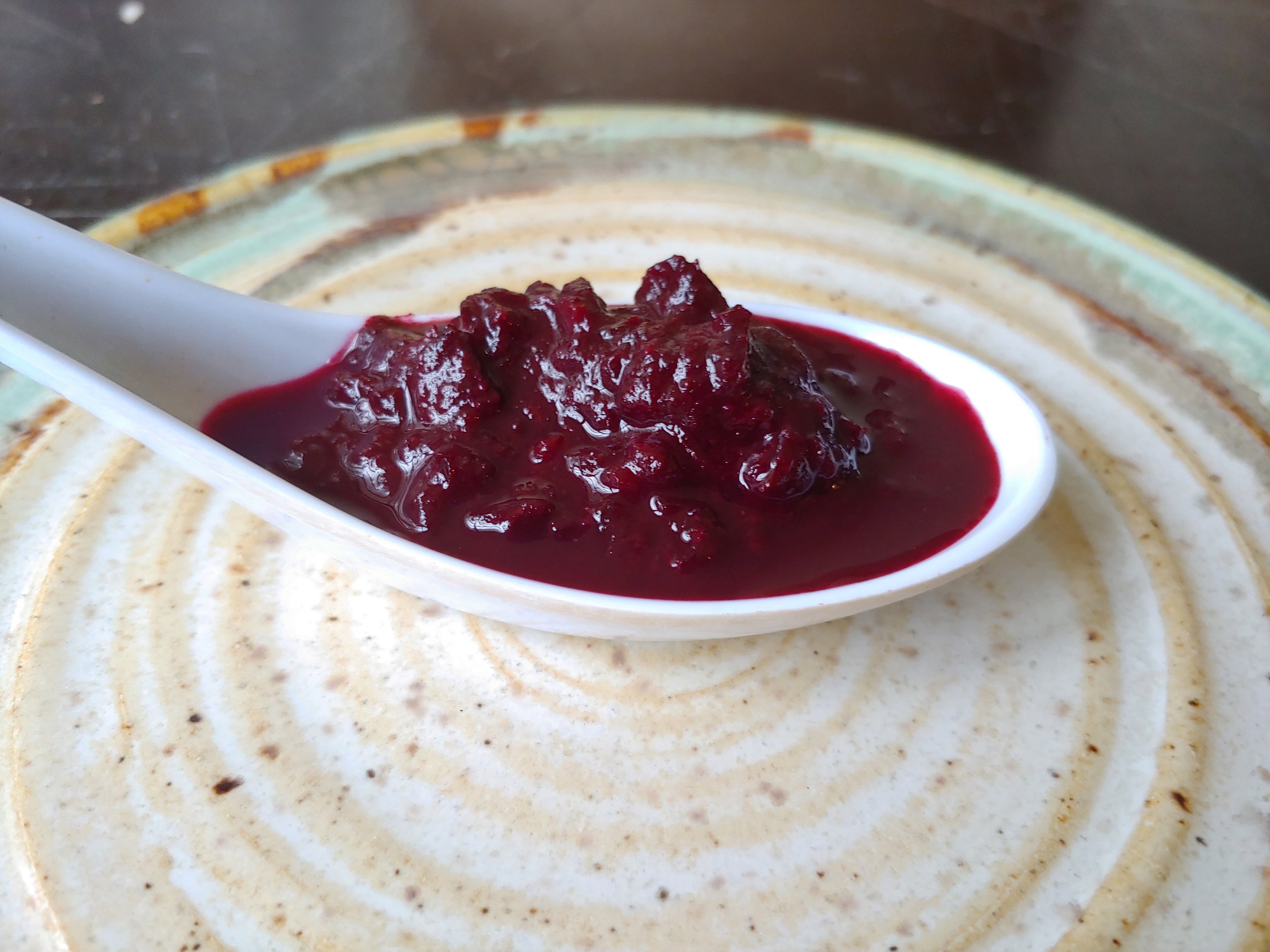Our fermented foods
Buddha’s Garden believes that good food starts in the field, so before we go any further, homage must be paid to the women and men who work hard to provide our community with delicious and nutritious ingredients. We source ingredients from Frogsong Organics, Meacham Urban Farm, Gamble Creek Farm, Blumenberry Farm, Rancho Gordo, Burlap and Barrel, Rhapsody Natural Foods, Sichler Farms, Seka Hills, Koi House, and many more.
Our wild lactobacilli and koji fermented foods enhance the love and compassion from the fields through beneficial microbial magic. The seasons dictate what we ferment. Every fermented food we create is kissed with the power of koji to further enhance flavors and nutrition.
A few notes about fermented foods:
Even if the ferment has a desirable ph or lower than 4.0, it may reactivate in the jar if the process was not completely done. If this happens, you will notice bubbling, and pressure build up. As stated on the labels please always open the jars slowly.
If you ferment smells like yeasty alcohol or has any rotten smells, molds, extreme bitterness, etc. please discard the entire jar and let us know immediately after purchasing.
Other factors that could reactivate fermentation is if the lid becomes damaged allowing other microbes from your refrigerator to inhabit the jar, too many major temperature changes from hot/warm to cold, and using dirty utensils to remove from the jar.
Cloudy brine is not bad brine. Some of the ferments present a somewhat clear brine when finished while others may be cloudy. This is perfectly normal and does not change the safety or quality of the ferment.
You will want to keep the ferments refrigerated for best texture and flavor. Consume within 6 months of opening for the most enjoyment. However, fermented food textures and flavors last a lot longer in cold storage.
Our most Popular creations’ flavor and pairing notes
Garlic Black Pepper Kraut
Tangy, pungent, earthy, warm. Pair with grilled sausages, stir fried vegetables and mushrooms, roasted carrots and potatoes, sandwiches, salads, the brine can be used for salad dressings, and whatever else your creativity comes up with.
Salsa Verde
Summer, tart, mildly warm to moderately spicey depending on the time of year, zesty, slightly smoky. Pairs well with grilled skirt steak, frittata, huevos rancheros, tacos, fried rice, and just about anything you would want to put salsa on or in
Seminole Pumpkin Salsa Hatch Chiles Edition
Fall, warm, nutty, earthy, slightly sweet, pumpkin flavor is up front. Put it on eggs, in salads, avocado toast, vegetables and mushrooms tacos, low and slow beans and rice, roasted chicken, crackers and cheese.
Hatch Chiles Kimchi
We start with ripe dried hatch chile pods from Sichler Farms in New Mexico, combine with the best aromatics, and flavor amazing local cabbages and greens. Sour, slightly sweet, crisp, umami. Pairs well with grilled meats, fish/seafood, stir fried vegetables, fried rice, soups, and so much more. A favorite of mine, and easy, is make up some al dente rice, let it sit overnight in the refrigerator, heat up a skillet nice and hot, add some good frying oil, stir fry the rice until lightly toasted, add some kimchi, toss well, finish with a fried egg and green onions, tamar to taste.
Zhoug Sauce
Zhoug sauce is a spicy cilantro sauce, traditionally prepared using a large (“marha”) and small stone (“wdi”) to crush the ingredients into a paste. It originates from Yemen but is also consumed in other Middle Eastern countries such as Israel and Syria. Think a punchy chimichurri. Pair with roasted vegetables, meats, seafood, hummus, falafel, and anything you would use chimichurri with. This sauce can be mild to spicy depending on the time of year as the jalapenos change heat level depending on the growing environment.
Heirloom Beans and Vegetables Misos
Umami, sweet, savory, earthy, a little funky. Stir into soups, boost your broiled fish, mash into potatoes, glaze vegetables, whisk into salad dressings, make mayo and mustard with it, whip into some butter, glaze for seafoods, meats, poultry, miso pasta, add it to ice cream, make miso ginger cookies, and so much more. It truly is a super versatile flavor enhancing ferment.
Fermentation Brine DO NOT THROW IT OUT
You can use the brine left over in your jar of ferments in various ways including salad dressings, finishing soup seasoning, marinating, and whatever else you come up with. Most of the brines that are left over have flavor, salt, and acid, perfect for finishing.
Ingredients
We use the very best, local, seasonal, regenerative vegetables, fruits, and aromatics, Burlap and Barrel spices, West coast sea salt, koji from Rhapsody Natural Foods, Hatch chiles from several small farms in New Mexico, and much more. A full list of ingredients is printed on each jar.
For more flavor and pairing information please contact us buddhasgardenllc@gmail.com
How to use
Fermented foods provide a new world of in depth flavors and aromas that will elevate your food creations. How do you use these ferments? How much do I use? The simple answer is experiment and see what combinations you like. Every ferment has it’s own unique characteristics that will lend themselves well to just about anything you create. Keep in mind when you use fermented foods, they are already seasoned and ready to be used. Also, they do have a higher salt content, which is apart of the process, so use extra salt sparingly, taste as you go, and build your flavors using the ferments first, then add more salt to taste. Also be conscious that most of the ferments we create have a decent acidity level, so be conscious of that as well. Acid enhances saltiness if you use too much extra salt. If you use the ferments in the right amounts you shouldn’t have to add a lot, if any, extra acid and salt to your dishes.
For more indepth information on how to use fermented foods please check out these websites
Miso and other koji ferments:
https://www.epicurious.com/expert-advice/20-ways-to-use-miso-paste-article
https://www.bonappetit.com/story/how-to-use-miso
https://chefjacooks.com/en/what-is-miso-paste/
Lacto ferments ie kraut and kimchi:
https://revolutionfermentation.com/en/blogs/fermented-vegetables/how-to-eat-fermented-vegetables/

